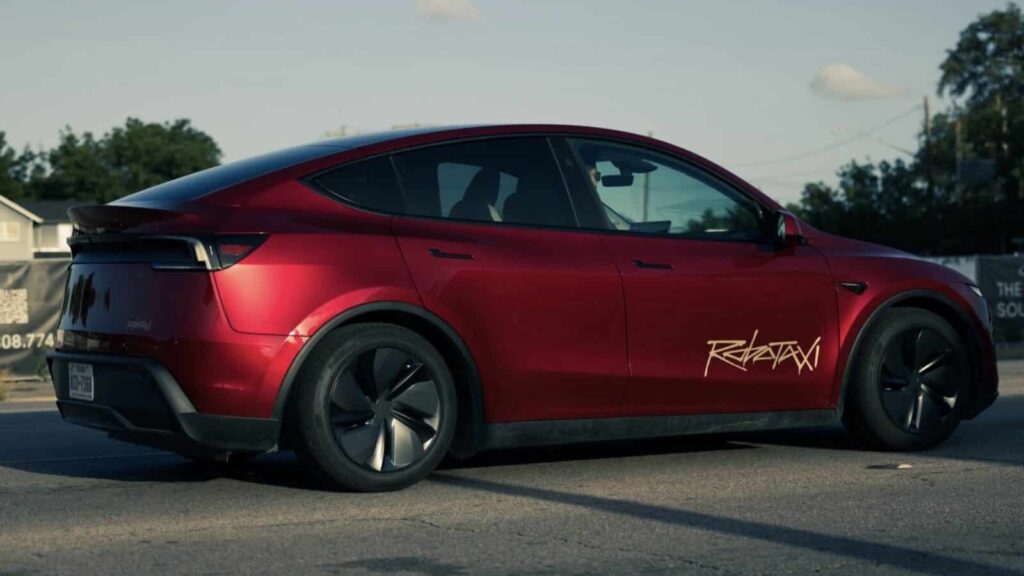Tesla has officially rolled out its new ride-hailing service in the San Francisco Bay Area, branding it under the forward-looking “Robotaxi” name. Local users can now book a Tesla ride via a dedicated app. But despite the branding hinting at a driverless future, there’s still a human behind the wheel. For now, the experience is more in line with traditional ride-hailing services like Uber or Lyft, rather than a fully autonomous transport solution.
For potential riders, the experience feels familiar. A Tesla electric vehicle likely running the company’s “Supervised Full Self-Driving” (FSD) system arrives to complete the trip. However, unlike the long-promised vision of a fully autonomous fleet, each ride still includes a human “vehicle operator” behind the wheel.
In reality, the service functions much like a typical ride-hailing trip in a privately owned Tesla with a human driver still very much part of the experience. While the service covers a wide area across the Bay Area, its current implementation places it in direct competition with traditional platforms like Uber and Lyft, rather than with truly driverless services from companies like Waymo.
Tesla’s launch approach in California has raised several regulatory eyebrows. Running a fully autonomous ride-hailing service in the state requires special permits from both the Department of Motor Vehicles (DMV) and the California Public Utilities Commission (PUC). According to official documents, state agencies grew increasingly cautious after Tesla employees hinted at an upcoming driverless rollout.
In response, Tesla’s legal team clarified to regulators that the company intended to launch a traditional ride-hailing service, limited to employees, friends, family, and a select group of the public. By ensuring a human driver remains in control, Tesla neatly sidesteps the strict regulatory requirements associated with fully autonomous vehicle deployments.
Unlike fully autonomous operators like Waymo, which are required to submit detailed reports to California regulators including safety data and the frequency of human interventions Tesla avoids such scrutiny. Because its service is classified as a standard ride-hailing operation, Tesla isn’t obligated to disclose any performance metrics related to its Full Self-Driving (FSD) system. According to crowdsourced data, Tesla’s consumer-facing FSD software still requires human intervention approximately every 500 miles, highlighting its ongoing reliance on driver supervision.

Tesla is extending this approach beyond California, with Austin, Texas standing out as a key example of the company’s broader rollout strategy. There, the company runs a comparable service except the “driver” is repositioned as a “safety monitor” seated in the front passenger seat. Texas law permits this setup, enabling Tesla to present the service as more autonomous than it truly is. Despite appearances, these safety monitors have access to a kill switch, confirming that the vehicles remain under human oversight.
Now expanding to nine additional U.S. cities, Tesla’s broader rollout appears to be more about branding than full autonomy. This broader rollout appears designed to strengthen Tesla’s image as a leader in autonomous driving despite the fact that its current technology continues to depend significantly on human oversight.
Tesla’s use of the “Robotaxi” branding for a service that still depends on human drivers appears to be a strategic response to the growing footprint of rivals already deploying fully driverless vehicles in select U.S. cities. While competitors like Waymo and Cruise are making real strides toward autonomy, Tesla seems to be leaning on its powerful brand and widespread EV fleet to give the appearance of offering a comparable service. In reality, however, it’s more marketing than breakthrough a carefully crafted illusion rather than a true autonomous solution.
What are your thoughts on Tesla’s “Robotaxi” rollout smart branding or misleading hype, given it still relies on human drivers? Let us know in the comments below.




